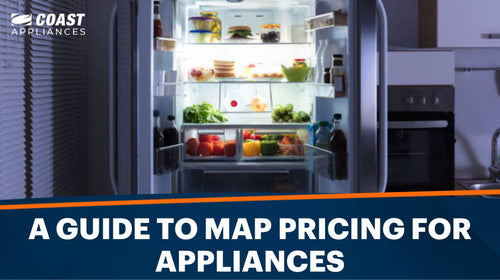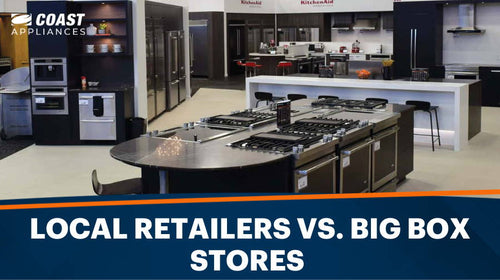Are you curious about the differences between microwaves and ovens and how to use them to their full potential in the kitchen? Look no further! In this blog post, we’ll take a closer look at these two essential appliances and help you make the most of them in your home. From the science behind their cooking methods to the best dishes for each appliance, we’ve got you covered.
In this article, we’ll cover:
- What Is the Difference Between a Microwave and an Oven?
- Microwave vs. Oven: Which Is Better?
- What Can I Cook With a Microwave?
- What Can I Cook With an Oven?
- Microwave vs. Oven Cook Times
- FAQs About Microwave vs. Oven
What Is the Difference Between a Microwave and an Oven?
Microwaves and ovens are different appliances with different cooking methods and capabilities, and they are best suited for different types of dishes. There are several key differences between the two appliances:
- Cooking method: Microwave ovens use microwaves, a type of electromagnetic radiation, to cook food. When microwaves are emitted from the microwave oven, they are absorbed by the water, fat, and sugar molecules in the food, causing them to vibrate and produce heat. This heat cooks the food. Traditional ovens, on the other hand, use heat for cooking. They work by heating up the air inside the oven, which in turn cooks. Traditional ovens can be fueled by gas or electricity, and the heat can be distributed in different ways, such as through convection or radiant heat.
- Cooking time: Microwaves generally cook food faster than ovens, as they generate heat directly in the food rather than relying on the transfer of heat from the air.
- Temperature range: Ovens can reach higher temperatures than microwaves, which makes them better suited for certain types of cooking, such as baking and roasting.
- Cooking capabilities: Microwaves are better for reheating and defrosting. They can also be used to cook some types of food, such as steamed vegetables or microwavable rice. Ovens are better for baking and roasting. They're also better at achieving a crispy or browned exterior.
- Energy efficiency: Microwaves generally use less energy than ovens because they cook food quicker.
Microwave vs. Oven: Which Is Better?
Ultimately, deciding between a microwave oven and a traditional oven will depend on your specific cooking needs and preferences. Both appliances have unique advantages and disadvantages, and each can be useful in different situations.
Here are some key points to consider:
- Speed: Microwave ovens cook food much faster than traditional ovens because they use microwaves to directly heat the water, fat, and sugar molecules in the food. This makes them a good choice for quick meals or for reheating leftovers.
- Energy efficiency: Microwave ovens use less energy than traditional ovens because they cook faster. This can be an advantage for people who are concerned about their energy usage or who want to save money on their utility bills.
- Size: Microwave ovens are generally smaller and more compact than traditional ovens, making them a good choice if you have limited kitchen space.
- Cooking options: Microwave ovens are not as versatile as traditional ovens because they cannot brown or crisp food in the same way. They are generally better suited for cooking and reheating softer, moist foods rather than baking, roasting, or grilling.
- Quality of cooked food: Traditional ovens are generally considered to produce higher quality cooked food than microwave ovens, especially for dishes that require browning or crisping, such as roasted meats and baked goods. For example, breads and pastries may not turn out as well in a microwave oven as they would in a traditional oven.
- Versatility: Traditional ovens are more versatile than microwave ovens. You can use them for various cooking methods, including baking, roasting, grilling, and broiling. They can also brown and crisp food in a way that microwave ovens cannot.
What Can I Cook with a Microwave?
Popcorn is probably the most famous thing you can cook with a microwave. However, there are other items you can cook. In fact, many different types of food can be cooked or prepared in a microwave oven. Here are just a few examples:
- Soups and stews: You can heat up soup or stew in a microwave-safe bowl or container. Just be sure to use a low or medium setting to avoid it boiling over.
- Vegetables: Many vegetables, such as broccoli, cauliflower, and carrots, can be cooked in the microwave. Place them in a microwave-safe dish with a little bit of water, cover, and microwave on high for a few minutes.
- Rice and grains: Rice and other grains can be cooked in the microwave by adding water and microwaving on high for a set amount of time. You can also use the microwave to prepare oatmeal or other hot cereals.
- Eggs: You can cook eggs in the microwave by cracking them into a microwave-safe bowl and microwaving them on high for a few minutes. You can use the microwave to make scrambled eggs, omelets, or even poached eggs. But remember not to cook eggs that are not cracked, as they will explode inside your microwave.
- Fruit: Use the microwave to prepare the ingredients needed for a fruit pudding. Apples, strawberries, and peaches are a few examples that cook well in a microwave.
- Meat: Some types of meat, such as chicken breasts and ground beef, can be cooked in the microwave.
- Desserts: You can make a variety of desserts in the microwave, such as mug cakes, microwave brownies, and microwave fudge.
- Drinks: You can use the microwave to heat up beverages, such as coffee or tea. You can also use it to make hot chocolate or other hot drinks.
This list is by no means exhaustive. There are more food items you can cook, and well, in your microwave oven. The key is to find recipes and techniques that work well. Also, be careful not to overcook or burn the food.
Some factors that can affect cooking times in a microwave oven include:
- The size and shape of the food: Larger and thicker foods, such as roasts and casseroles, will take longer to cook in a microwave than smaller and thinner foods, such as burgers and sandwiches.
- The power level of the microwave: Most microwaves have multiple power levels that allow you to adjust the intensity. Higher power levels will cook food more quickly than lower power levels.
- The starting temperature of the food: Foods that are chilled or frozen will take longer to cook in a microwave than those already at room temperature.
- The moisture content of the food: Moist foods will cook quicker in a microwave than dry foods because microwaves can penetrate the moisture and heat the food from the inside out.
What Can I Cook with an Oven?
A traditional oven is a versatile appliance. Here are just a few examples of foods you can cook in your oven:
- Baked goods: Ovens are great for baking a variety of breads, pastries, and desserts, such as cookies, cakes, and pies.
- Roast meats: You can use your oven to roast beef, pork, lamb, chicken, and other meats, as well as vegetables, such as potatoes and carrots.
- Grilled foods: Some ovens come equipped with a grill function, which you can use to grill meats, vegetables, and other foods.
- Casseroles and one-pot meals: Ovens do an excellent job cooking casseroles, lasagnas, and other one-pot meals that require baking or simmering for an extended period.
- Pizza: Pizzas and other dishes that require high heat and a crispy crust do nicely in a traditional oven. Think sandwich bread, rolls, etc.
Microwave vs. Oven Cook Times
Generally, microwave cooking is quick, with most items cooked in minutes. Here’s how the cook times compare for specific foods:
- Baking a cake: A traditional oven will take anywhere from 30–60 minutes to bake a cake, depending on the size and recipe. A microwave with a convection setting can bake a cake in a shorter time, anywhere from 5–7 minutes, with an additional 2–5 minutes of standing time.
- Roasting a chicken: A traditional oven will take about 1–2 hours to roast a whole chicken at 350 degrees Fahrenheit, depending on the size of the bird. A microwave can roast a small chicken in about 30–45 minutes, but it will not produce the same crispy skin as a traditional oven.
- Boiling water: A microwave oven can boil a cup of water in about 1–2 minutes, depending on the microwave’s wattage and the water’s starting temperature. A traditional oven will not be able to boil water.
- Cooking vegetables: A traditional oven will take about 25–35 minutes to roast vegetables at 400 degrees Fahrenheit, depending on the type and size of the vegetables. A microwave oven will do the job in 2–3 minutes.
- Roasting a potato: A traditional oven will take about 45 minutes to an hour to roast a potato at 400 degrees Fahrenheit, depending on the size of the potato. The same potato will take 5 minutes per side, ten minutes total, in a microwave oven.
Conclusion
We hope you found this guide informative and useful. If you're in the market for a new appliance, be sure to check out our collection of home appliances. We offer a wide range of options, including microwaves and ovens, at competitive prices. We're confident you'll find something that meets your needs and fits your budget. Also, do not hesitate to reach out to us if you have any questions or need help choosing the right appliance for your home. Happy shopping!
FAQs About Microwave vs. Oven
Is it better to cook in the oven or microwave?
The choice of appliance will depend on the specific characteristics of the food you are cooking, as well as your own time and energy constraints. Generally, microwaves cook food faster and use less energy, but they are less effective at browning or crisping the exterior of food. Ovens take longer to cook food and use more energy but are better at baking, roasting, and achieving a crispy or browned exterior.
Can I bake using a microwave?
While it is possible to bake some food in a microwave, microwaves are generally less effective than ovens for baking. That said, some types of microwave-safe dishes, such as microwave mug cakes and mug muffins, can be baked in a microwave with good results. These dishes are usually made in small quantities and are cooked in a microwave-safe mug or container. However, trying to bake more complex or larger baked goods, like cakes or bread, in a microwave is not recommended. Use an oven if you want to achieve the best results for baking.
Is it cheaper to cook in the oven or microwave?
Microwaves generally use less energy than ovens, which can make them more cost-effective if you are trying to save money on your energy bill. If you are cooking a large quantity of food, an oven may be more cost-effective because it can cook more food at once.















